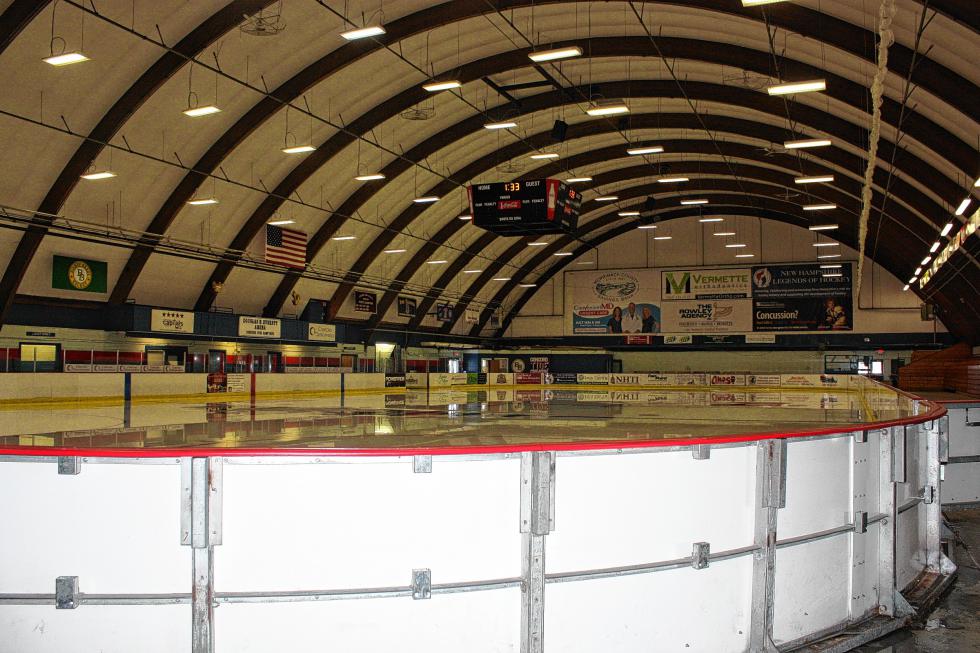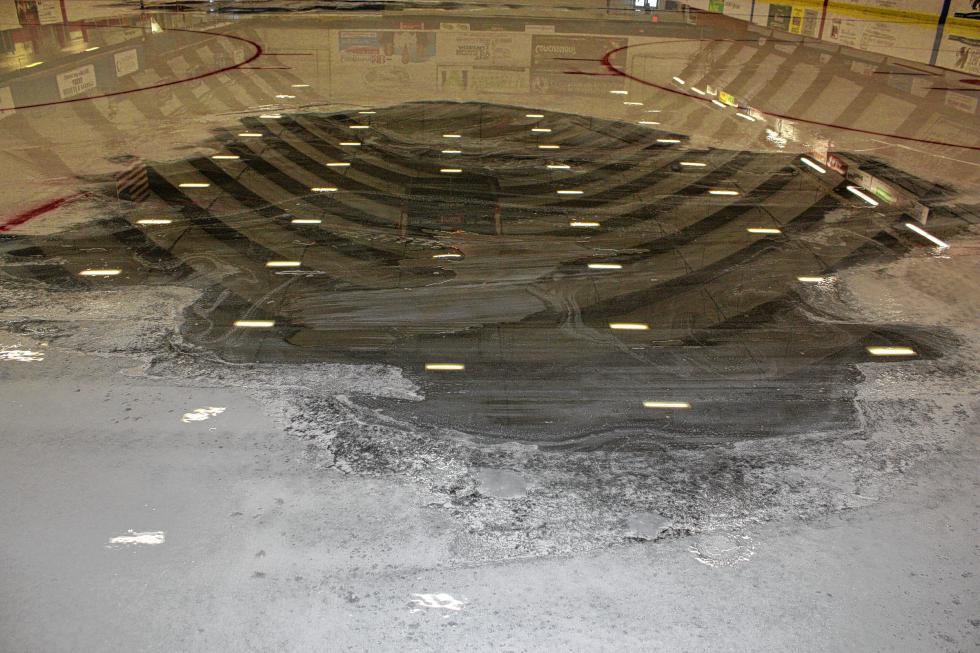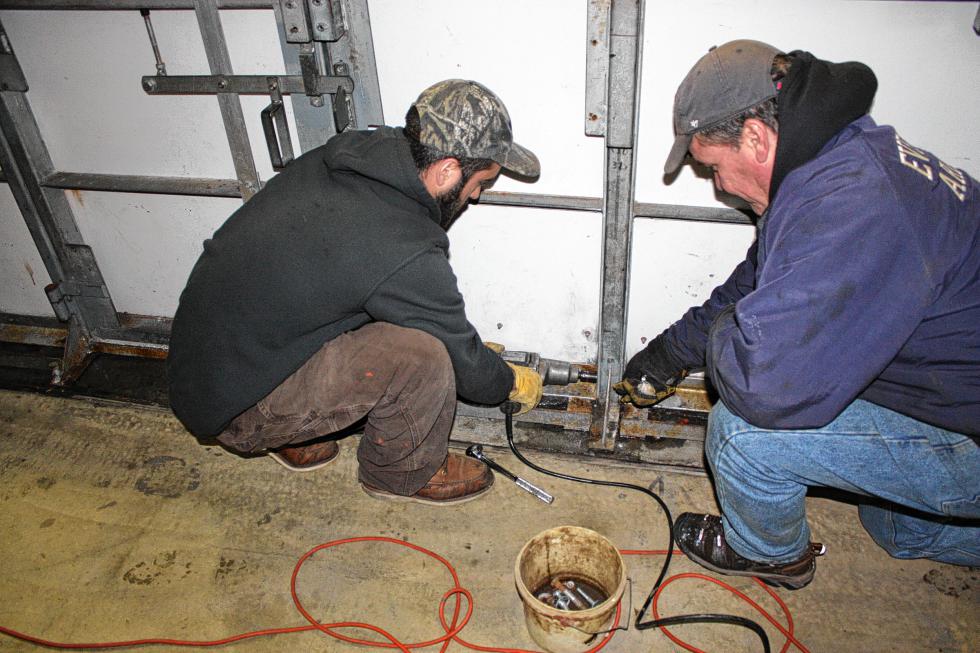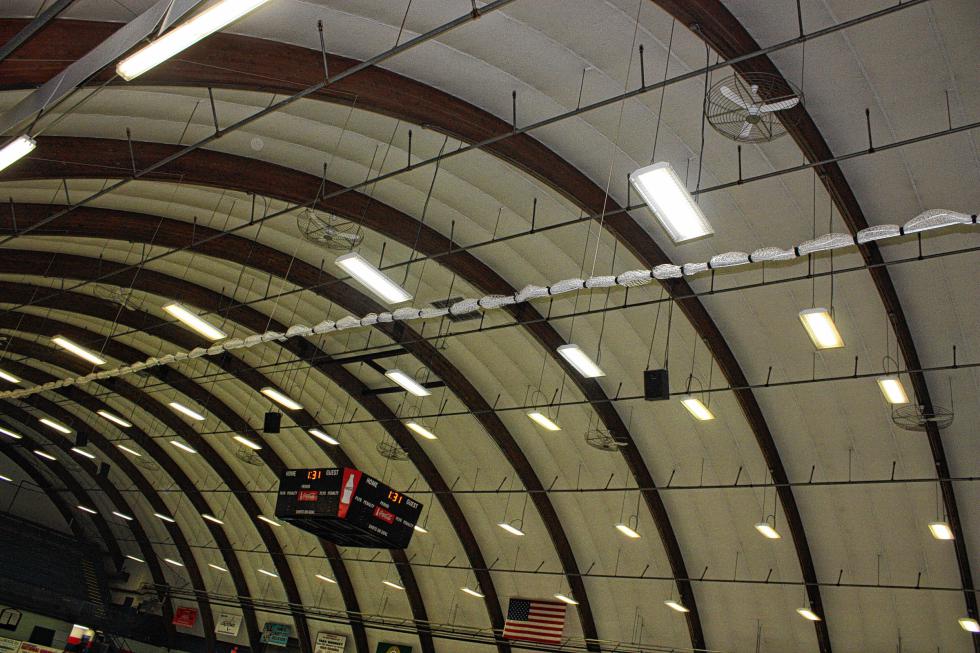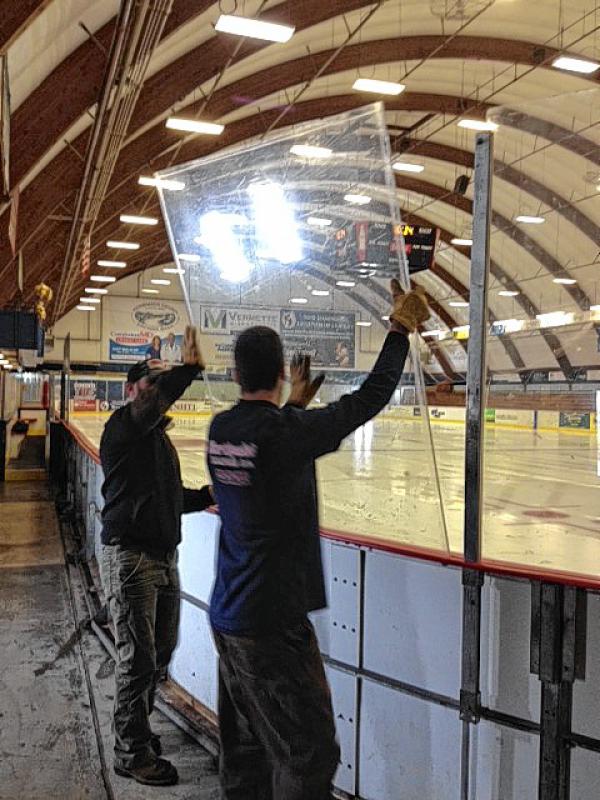If you’re a serious ice skater, we have some bad news for you: Everett Arena is now ice-free until September.
While that may be a bummer to the future Nancy Kerrigans or Patrice Bergerons of the world, it should come as welcome news for most of us, because it can only mean that spring is here to stay.
After a winter (that really didn’t seem that bad or that long) of ice skating, the arena will now host all kinds of friction-dependent events, such as home shows, gun shows, cat shows, a motorcycle swap, roller derby and a big flea market (which you can check out on page 10).
But we got to thinking: How do they change the arena over from an ice skating venue to a dry, non-freezing exhibition hall?
There was only one way to find out.
Last week, we stopped by the arena during part of the changeover process to see what was going on. Surely there would be dozens of people scrambling around with all kinds of tools and specialized devices designed for exactly this type of work and only this type of work.
That wasn’t quite the case.
In fact, the whole thing only takes a handful of guys, and only three were working during our visit.
But that was all the manpower needed on this day.
Jeffrey Bardwell, arena and properties manager at Everett Arena, was on hand to oversee and help with the operation.
“The last day of ice skating was Sunday, so we shut the refrigeration plant down Sunday night,” Bardwell said. “Monday and Tuesday we had a crew basically summerizing the equipment, putting that to bed until we start again.”
That first part is fairly straightforward: just like summertime equipment often needs to be prepared for winter storage, winter stuff needs to be prepped for summer storage.
Speaking of storage, all the boards are put into a locker room, where they’ll stay for the rest of the season. All the rubber floor mats, which allow people to walk around in skates without damaging the blades, are also tucked away in the locker room.
As far as getting rid of the actual ice?
“We shave the ice down as thin as possible with the Zamboni,” Bardwell said. “While one guy’s shaving, the rest of the crew is busy taking down the safety netting, taking down the safety shielding – the glass. That basically is the first day.”
So by this point, the arena has a somewhat icy surface contained by the lower boards (not the glass but the opaque, solid part), and that’s it. No glass, no nets. It would make a thrilling and dangerous environment to watch a hockey game.
“The second day, we’ll bring in a small loader and scrape any remaining ice out of the building, take down all the rink boards, put those away in storage, then we’ll clean the floor and do any other final cleanup that we need,” Bardwell said.
“We’ll go through and do a final clean-out of all the rooms. We have four locker rooms, and we use two of them during the offseason for meeting space, or roller derby uses them as locker rooms. The other two are used to store all our rink boards and all our rubber matting that we have around the rink.”
So how long does the whole process take, start to finish?
“It takes basically three days to get it turned around,” Bardwell said – “if you don’t run into any issues. We plan on four days and we’re always happy if we can do it in three.”
There were no major problems this year, and the arena was open in time for the first non-ice event of the year: the flea market.
It’s an impressive feat for a fairly small team to pull off.
“On the changeover, typically we’ll have five or six people,” Bardwell said. “The first two days we had five or six, the third day we were down to just two. We need a lot of muscle to take down the boards, so it’s definitely a young man’s job.”
There’s only two full-time staff members, and the rest are part-timers. The part-time staff used for breaking down the rink are staff members who worked over the ice season, like Zamboni operators. “We don’t see them again until September when we put the ice back,” Bardwell said.
The changeover date is usually a Sunday in mid-March. Sometimes it’s the second full week, sometimes it’s the third. “This year was a week later than normal, so we closed on the 20th,” Bardwell said. “It’s always mid-March, and it’s always mid-September,” he said of the times of year when the arena changes over.
And although this process was exciting and interesting to us, to the guys who do the job, it’s just work.
“Ice-in is more exciting than ice-out,” Bardwell said, referring to the times of year when the ice is either taken out or put back in.
But rather than just take his word for it, we may just have to go back in September to check out that more-thrilling experience.
Stay tuned!

